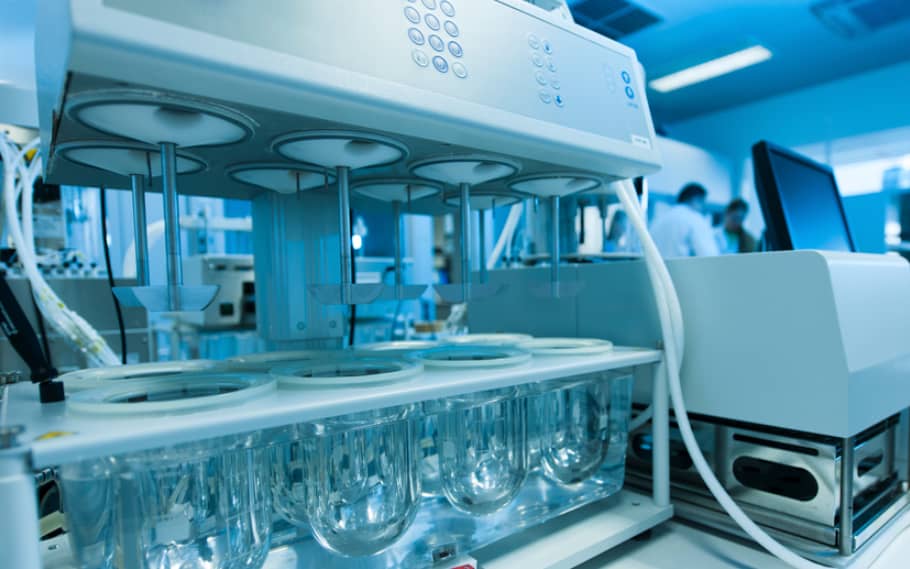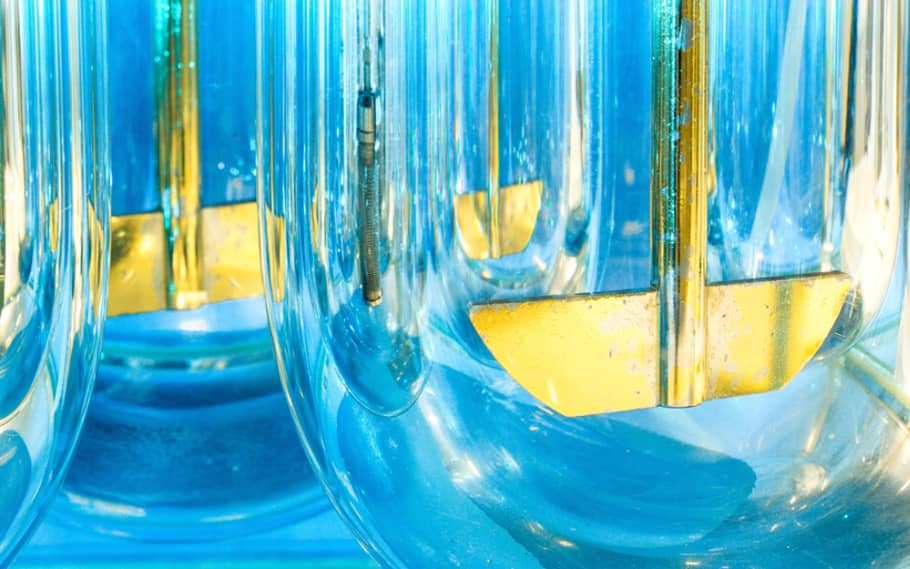Method development
In general, for method development for dissolution testing, the general regulations of the ICH Guidelines apply.
For the development of a release method, one can start off initially with a standard method. For example, for a quick release tablet, start off using the paddle method at 50 rpm with 0.1 M Hydrochloric acid as a medium. In the case of active ingredients with low solubility, the use of a solubilizer should be considered right from the start.
Release of the active ingredient from a pharmaceutical dosage form will be influenced by a variety of values. Some of these could be the pH-value of the release medium, the stirring speed, the type and/or the concentration of the solubilizer and also the type of sinker that is to be used. A watery release medium should be preferred and the volume should come to somewhere between 500 and 1000 ml. The pH value of the medium should ideally be somewhere between 1 and 6.8 and on no account should it be higher than 8. The recommended rotational speed of between 50 and 100 rpm should also be considered. In no case should the selected method exceed 150 rpm.
For testing the suitability of the method as part of the following stability testing, it is also very helpful to have a “good” and a “bad” batch of tablets as the selected method should in any case be able to discriminate. Here, the pH-value of the medium can both influence the solubility of the active substance and give the possibility of differentiating good batches of tablets from bad batches. When selecting the solubilizer, it should be ensured that the “sink-conditions” are achieved but that there has not been an unnecessarily large dosage, because that can have an effect of the tablet matrix. In the case of highly soluble active ingredients, it can also be sensible to insert very small amounts of solubilizers to avoid the formation of conglomerations. If a method has been selected, then the robustness of the release method should be monitored before analytic validation takes place. Should factors such as small changes in the pH value or salt concentrations have a great deal of influence, then the method will need to be specified or revised.
Method validation
If the most “suitable” release method has been found, then analytical validation of this method should be done at the latest before clinical studies are begun. Validation should be performed using only qualified equipment (IQ, OQ, PQ) and should be carried out in accordance with the ICH guidelines.
Important aspects here are the specificity, the linearity, the accuracy and the precision of the measurement method. In most cases, these are either UV spectroscopic methods or HPLC methods. According to the type of method used, additional parameters such as robustness and filter inspections are also a part of validation.
If light-sensitive substances are being tested, then it is recommended that investigations are performed in a yellow-light laboratory.
In the case of time-release tablets or modified release tablets with a release time of more than 8 hours, it is also sometimes problematic to carry this out using manual systems. Mostly, release is performed here in partially or fully automated systems. Here the issue of the transfer of a validated method to an automatic system arises.
Depending on the system to be used, the influence of the sampling unit (filtration, altered flow characteristics), of the cleaning effect, of spreading, of active ingredient adsorption and of specific equipment parameters (e.g. pumping periods) should all additionally be validated.








